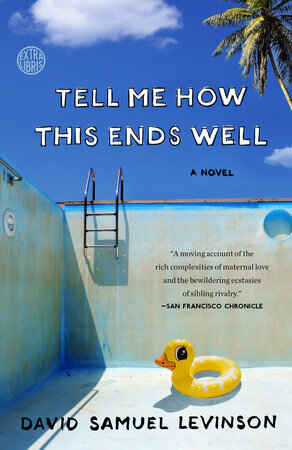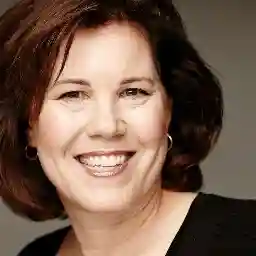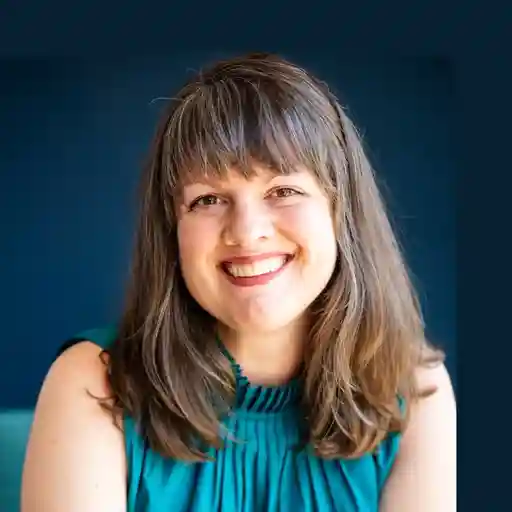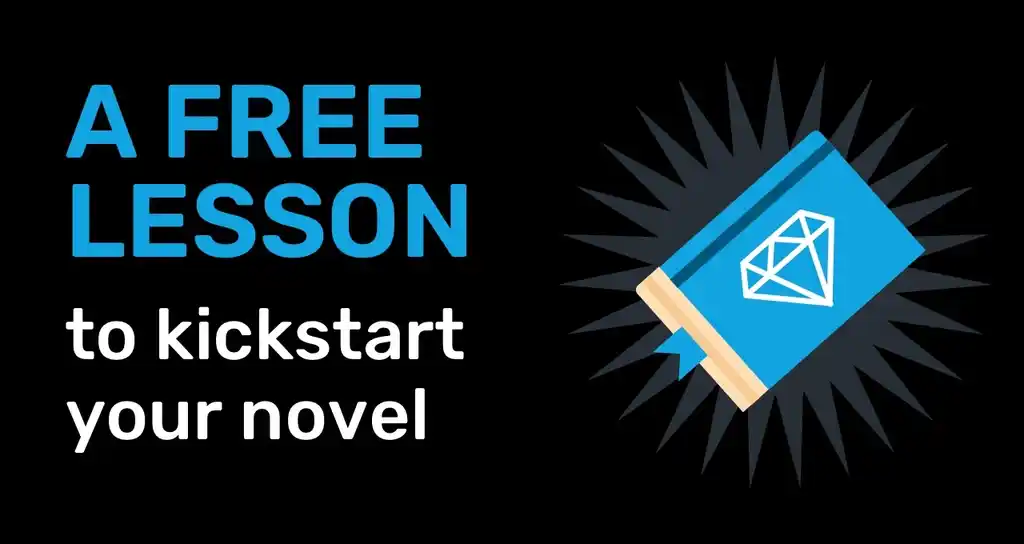David Levinson is an editor on Reedsy. To work with him on your next project, head to his profile and send a request.
First of all, I'm really excited to share how I wrote Tell Me How This Ends Well in three months, landed an agent, and got a really big deal out of it.
Visualize your novel
The first thing I want to do before we begin is to grab a pen and paper.
Now close your eyes. Mentally bring up your book — whether you've started it, finished it, or you’re in the middle of it. Visualize and rummage through it from beginning to end:
Locate your main character at the beginning; imagine them in an inciting incident.
Now go to the middle of your book, locate your main character there too. Find the scene with your main character that you think might be your book’s midpoint.
Finally, think of the end of your book. This might be the most important image: locate your main character here and fashion an image of your character at the end of the novel. What state is your character in?
Jot down these images very quickly, it just needs to be one or two sentences: write down the beginning image, the middle image, and the ending image.
When I wrote my books, that's what I did — I located a beginning image (or, an inciting incident, though my book doesn’t really have an inciting incident) and built each part of the story as an image from there. Next, I located a midpoint image, and then I located an ending image. I wrote from the beginning image to the middle image; and from the middle image to the ending image. And that’s all I did over the course of 90 days — it’s a good way to chart your progress.
You don't have to think about writing a 500-page book, just think about writing one page every day. That’s what got me closer to the middle and then, eventually, closer to the end. It's a really, really, really great technique if you can do it.
Why did I write a book in 90 days?
Why would I set that challenge for myself? Well, I was living in Atlanta, and I was very unhappy. I was teaching at Emory University, just a couple of classes, and it was my second summer. I had won a fiction fellowship to teach at Emory, it was a two-year fellowship, and I was in the last semester there. And one day I woke up and I said, this is what I want:
“I want to leave Atlanta in better shape than when I got here, and I want to have a manuscript under my belt.”
And that's what I did. I got up every day, I wrote, I taught and I went on a bike ride. I wrote every morning, for as long as I could, until I had to go. Then I came back and wrote some more — and then unwound on a bike ride. I was writing about twenty-five hundred words a day, which is about ten pages, but I could only do this because I had a goal. I knew what I wanted, and I was not going to leave Atlanta without fulfilling those promises to myself. These are key promises that you make to yourself — and you could do this in tandem.
Maybe you want to repaint your house by yourself; maybe you want to write a book in ninety days; whatever you want, each challenge feeds into the next challenge, building together. My wish to get into better shape fed my desire to finish my novel. It was basically a form of DYI self-improvement challenge. With that in mind, I have seven tips for you to write a novel in ninety days, no matter what genre or length novel it is:
Tip #1: Know if you really do want to write a novel.
First things first, these are very, very time-consuming projects, so you have to decide carefully if you want to write a novel. This tip might sound easy, but it’s important to get this out of the way before you can begin.
When I was writing Tell Me How This Ends Well, I was teaching two classes, I was sitting on committees, and I had a very full plate — but I managed to carve out time every single day to write, go to the gym, and to go cycling.
Tip #2: Know your premise, and commit to it.
Once you've decided that, yes, you want to write a novel, then you have to ask yourself these questions about what kind of book you’re setting out to write:
“What kind of genre is it? Is it satire? Is it a murder mystery? Is it both?”
For example, my novel is a dark comedy about three siblings who plot the death of their father over Passover. (It might sound morbid, but it's actually quite funny!)
After you come up with a premise, you have to commit to the premise. I committed to the premise that I was going to write a satirical novel about antisemitism in the year 2022. I decided this would be the background of my novel, the rise of antisemitism in America (which is timely still), and then the foreground is this family that's coming apart at the seams.
Tip #3: Determine your timeframe and structure.
The next step is to determine a timeframe and a structure for your novel. Keep in mind that this is all before you even sit down to write — this is preparatory work. You’re prepping your brain to jumpstart this project.
I’d like to pause to make the distinction that this isn’t outlining, I’m not telling you to outline. In fact, I never outlined my book, and I don't use outlines. There are two kinds of writers: outliners and pantsers, and I happen to be a pantser! But, I'll tell you more about that later.
Anyway, it's very, very important that you nail down your book’s timeframe and structure. So, what was my timeframe within the novel? It takes place over four days: Friday to Monday, over Passover weekend in L.A.
 After I nailed down the timeframe, I needed to get to grips with the structure. Of course, there are all kinds of structures to use, and every book has its own structure. I decided that I would do a Rashōmon, which consists of characters telling the same story from different perspectives.
After I nailed down the timeframe, I needed to get to grips with the structure. Of course, there are all kinds of structures to use, and every book has its own structure. I decided that I would do a Rashōmon, which consists of characters telling the same story from different perspectives.
The multiple POVs in my book are as follows: there are four main characters, and we see the story from the POV of the three siblings, and then the mom. So, why did I choose the three siblings, and then the mother? Because the book is about the father, he never got his own voice. I did this because you can learn so much about him just from the siblings and from the mom.
When you’re deciding on your structure, you need to be very specific: I chose to start with the youngest son; then the middle sister; then the eldest son; and finally I went to the mother. It was all chronological.
What I did then was to decide that I would write novellas instead of shorter chapters (very trendy these days).
For every chapter, every sibling gets 120 pages. For example:
- Friday is Jacob, 120 pages, and I wrote his entire day;
- Saturday is Edith, another 120 pages;
- Sunday is Moses, the third sibling, another 120 pages, and finally;
- Their mother, Raz, got Monday.
I was very, very, very committed to the premise, the time frame, and the structure.
That said, once you've committed to all of these things, you’re still not quite ready to write yet.
Keep a notebook
Where do you keep all of this? Should I just keep all of these ideas in my head? Well, you should be writing it all down in a notebook that will become your Bible. It's a pathway for you when you get stuck. Think of it like this: you're the chef of your own novel and, as a chef, you’ve got to do the prep work, right?
Suggestion: Treat yourself to a really thick notebook and a really great pen or pencil!
Tip #4: Get to know your characters.
The fourth thing you want to do before you even sit down to write is this: write a 10-page bio for each of your main characters. In my case, I had four, but I also did a fifth bio for the father — who never even appears — because I had to know him inside-out too.
A 10-page, single-spaced, bio of every main character might sound like a lot. But, really, in a novel, there should not be more than three or four main characters. You also have to do that with the supporting characters — though you only need to write five pages. If you have ten supporting characters, you have to know them too, but you don't have to know them as in-depth as you do with your main characters.
But, either way, you’re going to have a few bios to write!
Tip #5: Develop complex moral motivations for your characters.
Your main characters have to have moral arguments that exist in contention with all the other characters. This can be very tricky.
In my book, for example, I have three siblings who want to plot the death of their father, but that's not really true. It's actually one sibling who wants it and he has to convince the other siblings to do it. So Jacob, the first character, is the one who really wants to kill the father because they need to kill him to save their mother.
Of course, they don't just want money; the mother has had a very hard marriage and the father is a domestic abuser. He’s been very mean to the siblings, so they want to get rid of him because the mother is dying and they want to gift her the last few months of her life. They want to give her happiness, joy, and peace, because, as they come to find out, the father has caused her demise.
But, it gets complex because Edith, who's closer to her dad, doesn't want to — and Moses is on the fence: he can go either way. So, when I say moral argument, this is what I mean:
- Jacob has a moral argument, he wants the father dead (for sympathetic reasons).
- Edith's moral argument is that she doesn't want the father dead (also for sympathetic reasons),
- Moses’s argument is that he’s ambivalent and can be convinced either way.
Do you see how these three characters might come into conflict constantly? Their own moral arguments come together to make up the moral universe of your novel.
In addition to the main characters, you also have supporting characters. For my book, they sort of showed up for Jacob, Edith, and Moses. So you have all of these characters working through the moral arc of your moral universe, which is your novel. This will all begin to flow once you write it down. It will help you avoid making the mistake that a lot of writers make: unwittingly writing characters that are exactly like every other character.
Preparation is key!
This is all in preparation for writing your novel in ninety days. A lot of people don't put this prep work in before they sit down to write, and that’s part of what makes some books take up to decades to write.
Once you get in and you start writing, you’ll remember the beginning image, the middle image, and the ending image.
Tip #6: Always outline tomorrow’s scene
When you’re writing, you’ll be in this zone and you get done with a section or a chapter, and you celebrate and call it an evening. When you come back the next day, you often find you have no idea what to write. You sit there in front of your computer or your writing pad and you're stumped — you don't know where to go from there.
Here's an amazing tip I learned. One that I recommend you do when you come to the end of a chapter: let's say you've finished chapter three. Before you ever get up, even if the house is on fire, you have to type out where the story is going to go next time you write.
At the end of each chapter, before you leave, put up a set of brackets and write three to four sentences of your plan for the next scene.
Let’s say I come to the end of page fifty-one in the Jacob section, and I type “the business of death waits for no man.” I wrote 2,500 words in that session, I don't want to write more and I’m tired. So what do I do? Before I get up, I put a bracket up and say what will happen in the next scene. Not in the next chapter — you're writing scenes, which are composed of images, right?
Your aim here is to just type out the image with your main character. For example, your main character’s name is Patricia, in chapter three she wants to buy a dog. For your next scene note, you might write:
[Patricia gets in her car to drive to the pet store then it starts to rain, so she skids off the road]
Side note: You always want to complicate your narrative, right? You don't want to give your characters everything they want all the time or else why is anyone going to read this story? They want struggle, they want conflict.
This might just be the most important key to getting your novel done in 90 days: never get up from your desk, your bed, or wherever you are without giving yourself a breadcrumb to the next scene. It’s vital, so the scene doesn't have to be perfect, the image doesn't even have to be perfect, but you've got to move the narrative forward at all times, which leads me to my next point.
Tip #7: Always move forward
I’m going to circle back to the beginning a bit here, but you need to figure out your start, middle, and end, and work towards those goals. You always need to be writing towards something — you don't want to figure this out during your writing. Always write towards an image. Take this as an example to set your word count:
If you want to write a 300-page book, you’ll need to figure out what the beginning, middle, and end are. And then you need to set a counter, of how many words you need to write every day to get to a 300-page novel.
My novel was 450 pages, which is roughly 150,000 words. So I had to write 2,500 words a day more-or-less, and I never took a day off.
It’s very hard, but don't take days off — continuity is another key element to this and that's why I kept writing. I kept going because I knew I would lose the continuity of the novel and then I'd have to go back and I didn't want to have to do that. Like a shark, you must always move forward.
Write now, fix later
You have plenty of time to revise later, like I said, if you have an issue on page 40 with continuity, make a little notation in your notebook and go back when you've finished the manuscript and fix it. If you tamper with something on page 30, it might upset something on page 120, you have to keep a notebook of these things. These are the problems you’re likely to think about as you're writing, so you can go back and correct them.
Tip #8: Always hit your word count
It’s incredibly important that you do not stop writing until you've come to the end of your word count for the day. This word count does not include the bracketed images scenes — it’s just the story, not your roadmap.
What happens next?
So, you’ve written from the beginning image; to the middle image; to the ending image and you’ve completed the first draft in 90 days, congratulations!
It's a hell of an achievement, let me tell you that now. But you might also feel like you've just run seven marathons, and you might just be so exhausted that you never want to look at this book again, quite frankly. What do you do after that?
Forget about it (for a while)
What I did with Tell Me How This Ends is simple: I put it in a drawer for a month. I didn't look at it. I tried not to think about it, but, of course, that's easier said than done. After that month, I left Atlanta fitter, and with a manuscript in hand. Which is exactly what I had promised myself I would do.
I didn't look at the book for probably a month or six weeks. I moved out of Atlanta and I went to New York before I finally looked at the manuscript again. I gave it a solid read, I fixed what needed to be fixed, and then I sent it out to about 30 agents.
A quick sale
The agents all had very different things to say about it. At this point, I knew that I had a good manuscript and I only needed one agent to like it — and one did. He took me on in mid-November and he wanted me to do some rewriting. I told him no because I thought that the manuscript was perfectly fine the way it was. Luckily, he ultimately agreed.
Then my agent called me in mid-December. He said wasn’t sure he wanted to send it out right now, because it was toward the holidays. No one reads during the holidays, he said. I disagreed and said “just send it out and if no one wants it, then we'll send it out again in January or February”, which was apparently convincing because he agreed.
So he sent it out for people to read over the weekend, and by the next Tuesday, we had an offer. I got on the phone with the publisher and the editor who was going to edit the book — the deal was closed by Wednesday. It took two days for this book to sell, and I can't really tell you why it sold so quickly, except I guess I had a good agent and I think the manuscript was really tight — and it was tight because I followed my own advice.
What I’m trying to convey is that the tips that I'm giving you are the tips that I didn't even know I was following until I looked back after a friend of mine asked how I did it and I realized this is how I did it. And you can do it too. If it can happen to me — and I've been living off my advance for the last few years — it can happen to you.
Postscript
The crux of my advice is that no matter what you're working on — whether it’s three months or three years in the making — you need to give yourself permission to write whatever you want. I know you've heard this probably a million times, but when I finally got out of my own way and I let my imagination go crazy, it was freeing, and writing felt amazing.
I learned more about writing — and my own writing — in three months, than I ever learned in grad school. There’s something so divine about sitting down and creating something out of nothing. And that's what you're doing when you sit down to write: you are creating something new that no one's ever seen before. With that, I’ll end this talk with the hope that you'll take these tips from me and go forth and write your little heart out!





